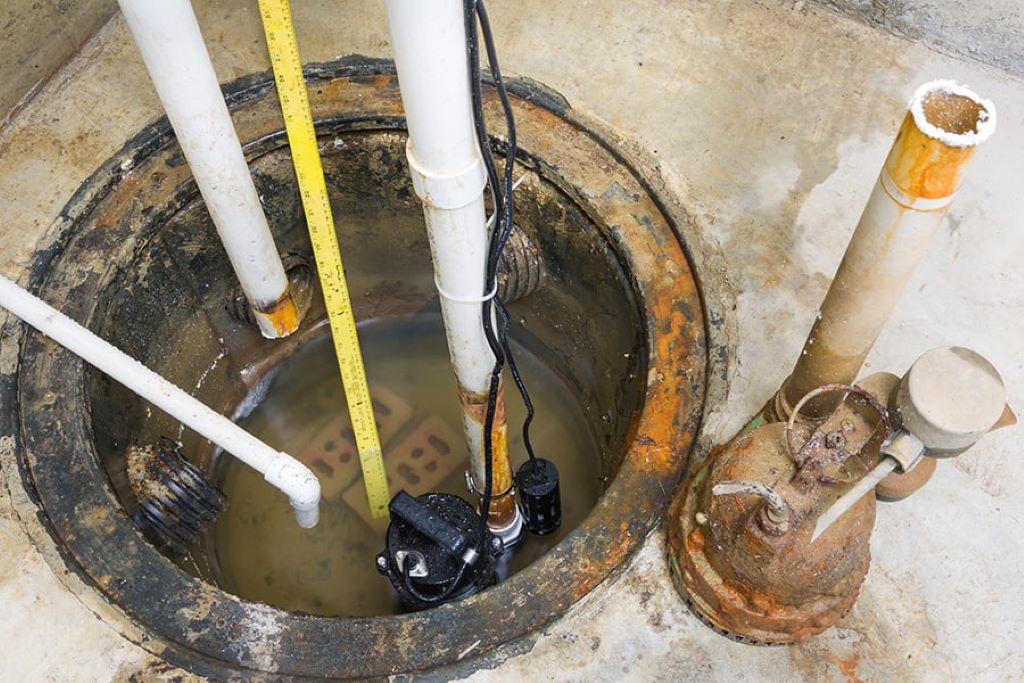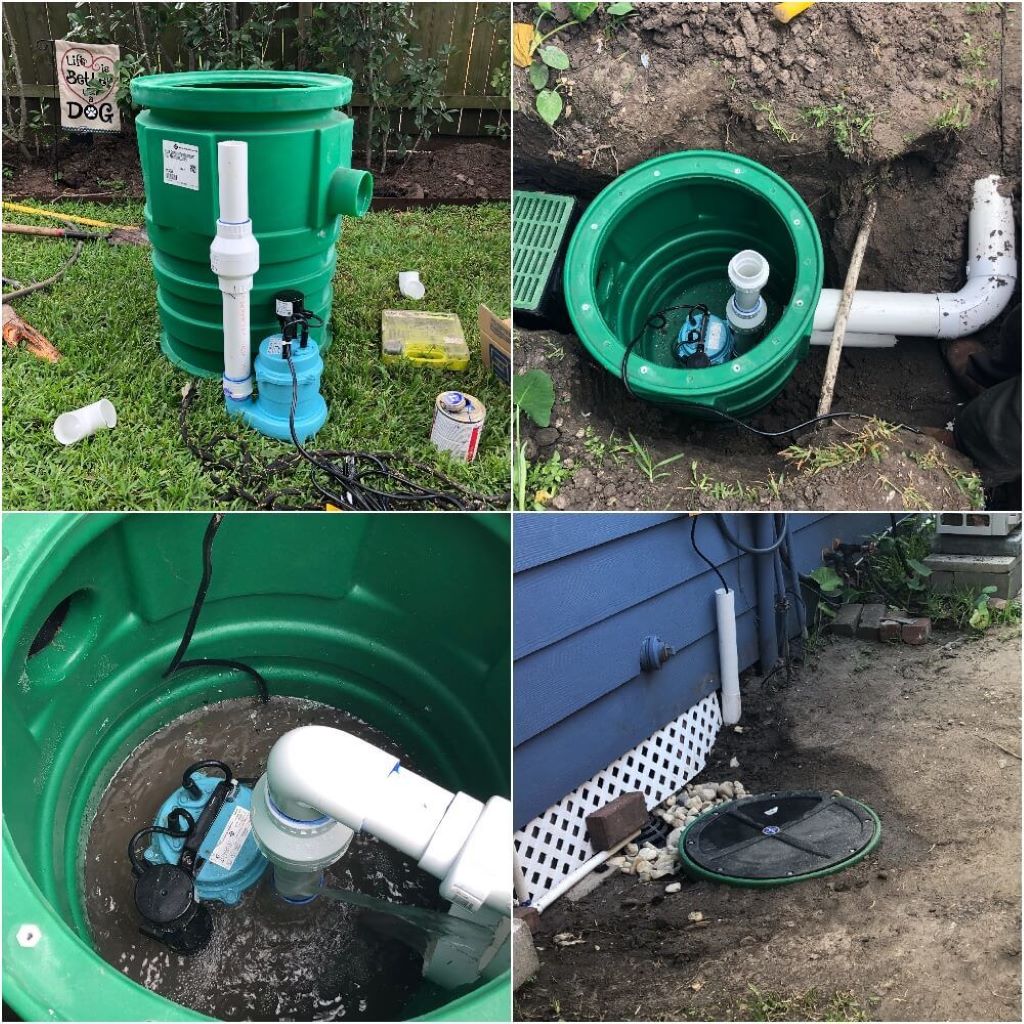A sump pump is a device that is used to remove water from the basement or crawl space of a building. It prevents flooding and water damage by pumping the water out to a safe location away from the foundation. In cases of heavy rain, melting snow, or a high groundwater table, a sump pump is essential to keep the area dry and prevent any water-related issues. With its automatic operation and reliable performance, a sump pump provides peace of mind to homeowners and business owners, ensuring that their properties stay safe and protected from water damage.
So, whether it is a residential or commercial space, a sump pump serves as a crucial line of defense against potential flooding and the resulting property damage.
Importance Of Sump Pump
A sump pump is essential for preventing basement floods by removing excess water. It helps to maintain a dry and safe environment by directing water away from the foundation of a property. This device plays a crucial role in protecting against water damage and mold growth.
Importance of Sump Pump Basement Flooding Prevention A sump pump plays a crucial role in preventing basement flooding. It is commonly installed in basements to pump out excess water that accumulates due to heavy rainfall, groundwater seepage, or melting snow. By effectively removing this water from your basement, a sump pump helps keep your space dry and protects it from potential water damage. With its ability to quickly and efficiently pump out water, it serves as an essential defense against the devastating effects of flooding. Water Damage Prevention One of the primary purposes of a sump pump is to prevent water damage in your basement. Water intrusions can lead to a host of issues such as mold growth, structural damage, and the weakening of foundations.
However, with a properly functioning sump pump in place, you can significantly reduce the risk of water-related problems in your basement. By promptly removing water that might otherwise seep into your basement, a sump pump helps to keep your belongings, walls, and floors dry and protected, providing peace of mind that your basement is shielded from potential water-related disasters. It’s crucial not just to choose any sump pump, but to select the right size and type based on factors like the size of your basement and the average amount of rainfall in your area. Additionally, being aware of common issues, such as when a sump pump trips breaker, is important for maintaining the efficiency of your system. A professional plumber or sump pump specialist can assist you in making the correct decision. For more information and guidance on selecting and maintaining sump pumps, Snapbuzzz.com can be a valuable resource, offering insights and advice tailored to your specific needs.
There are two primary types of sump pumps: pedestal and submersible. Each has its advantages, so it’s crucial to consider your specific needs before making a selection. In conclusion, a sump pump is an essential investment for any homeowner with a basement. It acts as a proactive measure against basement flooding and water damage, providing round-the-clock protection for your valuable belongings and the structural integrity of your home. Don’t wait for a disaster to strike; install a reliable sump pump today and ensure the safety and dryness of your basement.
How Sump Pump Works
When it comes to protecting your basement from water damage, a sump pump plays a crucial role. But have you ever wondered how this device works? In this section, we will dive into the mechanics of a sump pump and explore its different types.
Basic Mechanism
A sump pump is essentially a small pump installed in a pit, known as a sump basin, usually located in the basement. When water accumulates in the pit, the sump pump springs into action, pumping the water away from your home to prevent flooding.
The basic mechanism of a sump pump involves an inlet where water enters the basin, leading to a float switch or sensor that detects rising water levels. Once the water reaches a certain height, the float switch activates the pump, which then begins to remove the water. A discharge pipe is connected to the pump, allowing the water to be directed away from your property.
Pump Types
Now that you understand the basic mechanism, let’s explore the different types of sump pumps available:
- Submersible Sump Pump: This type of sump pump is fully submerged in the sump basin, allowing it to operate quietly and efficiently. It is designed to prevent electrical hazards as it is well-insulated and can handle larger volumes of water.
- Pedestal Sump Pump: Unlike submersible pumps, pedestal pumps are not submerged but are rather positioned on a pedestal above the sump pit. They are generally less expensive and easier to maintain but can be noisier and less powerful than submersible pumps.
- Battery Backup Sump Pump: This type of sump pump serves as a reliable backup when the power goes out, ensuring that your basement stays protected even during electrical outages. It is typically used in conjunction with a primary sump pump.
Choosing the right type of sump pump depends on various factors, such as the size of your basement, the amount of water intrusion, and your specific needs. Consulting with a professional can help you determine the most suitable pump for your situation.
Sump Pump Installation
When it comes to sump pump installation, it’s crucial to understand the importance of this process in preventing basement flooding. Proper installation ensures that your sump pump can effectively remove excess water from your home, safeguarding it from potential water damage.
Location Consideration
Before installing a sump pump, it’s essential to carefully consider the location. Choose a spot in the lowest point of your basement to gather water naturally. This helps the sump pump operate efficiently by mitigating the risk of water accumulation in your basement.
Professional Installation Vs Diy
When it comes to sump pump installation, you might wonder whether to opt for professional installation or attempt a DIY approach. Professional installation guarantees expertise and compliance with building codes, providing peace of mind. DIY installation requires thorough research and precision to ensure the sump pump functions effectively.
Sump Pump Maintenance
Regular maintenance of your sump pump is essential to ensure it functions optimally and protects your basement from flooding. By regularly inspecting your sump pump, troubleshooting common issues, and performing simple maintenance tasks, you can extend its lifespan and prevent potential problems in the future.
Regular Inspections
Regularly inspecting your sump pump can help identify any problems early on and prevent major issues down the line. Follow these simple steps to conduct a proper inspection:
- Check the power source: Ensure that your sump pump is properly connected to a reliable power source and that the power cord is undamaged.
- Inspect the float switch: The float switch is responsible for activating the sump pump when the water level rises. Ensure that it moves freely and is not obstructed by debris.
- Test the backup battery (if applicable): If your sump pump has a backup battery, test it regularly to ensure it is functioning correctly. Replace the battery if it is weak or damaged.
- Remove debris: Clear any debris or foreign objects that may be obstructing the sump pump and its float switch to ensure proper operation.
- Check the discharge pipe: Make sure the discharge pipe is securely connected and free from any clogs or obstructions that could impede the flow of water.
Common Issues And Troubleshooting
Despite regular maintenance, sump pumps can sometimes encounter issues. Here are some common problems you may encounter and troubleshooting steps to resolve them:
| Issue | Troubleshooting |
| Sump pump won’t turn on |
|
| Sump pump runs continuously |
|
| Sump pump makes unusual noises |
|
Regularly maintaining and inspecting your sump pump will ensure its reliability and protect your basement from potential water damage. By following the above maintenance tips and troubleshooting common issues, you can have peace of mind knowing that your sump pump is in optimal condition to handle any potential flooding.
Choosing The Right Sump Pump
When it comes to protecting your basement from flooding, a sump pump is an essential tool. But with so many options available, choosing the right sump pump can be overwhelming. To help you make an informed decision, here are some factors to consider and backup systems to ensure your sump pump operates efficiently.
Factors To Consider
When selecting a sump pump, there are a few important factors you should consider:
- The pump type: There are two main types of sump pumps – submersible and pedestal. Submersible pumps are placed inside the sump pit and are often more powerful and quieter. Pedestal pumps, on the other hand, have the motor on top with the pump at the bottom and are better suited for smaller areas.
- Motor power: The horsepower of the sump pump’s motor should be determined based on your specific needs. A higher horsepower may be necessary if you have a larger basement or anticipate heavy water flow.
- Pump capacity: The pump’s capacity is measured in gallons per minute (GPM) or gallons per hour (GPH). Consider the size of your basement and the amount of water you expect to be pumped to determine the appropriate capacity.
- Switch type: The switch determines when the sump pump turns on and off. The most common types are float switches and pressure switches. Float switches activate the pump when the water level rises, while pressure switches turn on the pump when water pressure increases.
- Battery backup: Investing in a sump pump with a battery backup system is crucial. This ensures that your sump pump continues to work even during power outages, providing an extra layer of protection for your basement.
- Alarm system: An alarm system is another valuable feature to consider. It alerts you if the water level in the sump pit becomes too high, indicating a potential problem that requires immediate attention.
Backup Systems
Having a backup system is vital to prevent basement flooding in case your primary sump pump fails. Here are some backup options to consider:
- Battery backup: As mentioned earlier, a battery backup system ensures your sump pump keeps running during power outages. It provides peace of mind, knowing that your basement remains protected even when the electricity is out.
- Water-powered backup: This type of backup system uses your home’s water supply to generate suction and operate the sump pump. It doesn’t rely on electricity or batteries, making it a reliable option.
- Generator backup: If you live in an area prone to power outages, investing in a backup generator can keep your sump pump functioning. Ensure that the generator’s capacity matches the power requirements of your sump pump.
Frequently Asked Questions For What Does A Sump Pump Do
How Does A Sump Pump Work?
A sump pump works by collecting water in a pit or sump basin and then pumping it away from your home’s foundation. When the water level in the pit rises, the pump is activated. It then pumps the water through a discharge pipe and away from your property, preventing flooding and water damage.
Why Do I Need A Sump Pump?
A sump pump is essential for homes with basements or low-lying areas prone to flooding. It helps protect your property from water damage caused by heavy rain, melting snow, or rising groundwater. By efficiently removing excess water, a sump pump prevents structural damage, mold growth, and other costly repairs.
How Often Should I Test My Sump Pump?
To ensure that your sump pump is working correctly, it is recommended to test it at least once a year. Simply pour water into the sump pit to activate the pump and check if it pumps the water out effectively.
Regular testing and maintenance will help identify any issues early on and keep your sump pump in optimal condition.
Can I Install A Sump Pump Myself?
While it is possible to install a sump pump yourself, it is recommended to hire a professional for this task. Sump pump installation involves handling electrical connections and working in tight spaces. A professional can ensure that the pump is installed correctly, reducing the risk of malfunctions and potential water damage in the future.
Conclusion
A sump pump is a vital tool for preventing basement flooding. The shallow well pump installation diagram not only simplifies the installation process but also emphasizes the significance of a sump pump in efficiently draining excess water to safeguard your home from water damage and mold, highlighting that regular maintenance and proper installation are crucial for its optimal performance and can save you from costly repairs, ensuring your peace of mind.






Average Rating